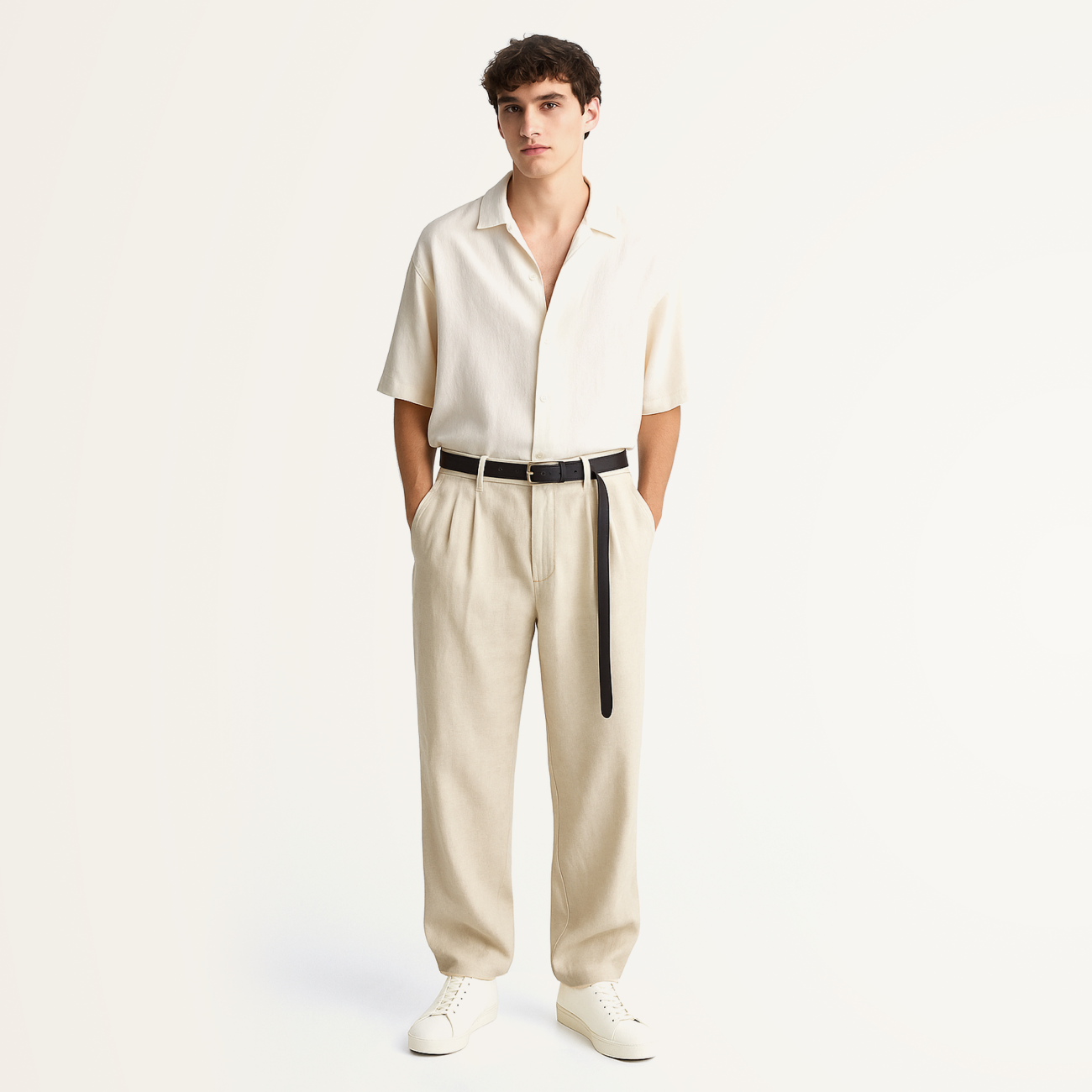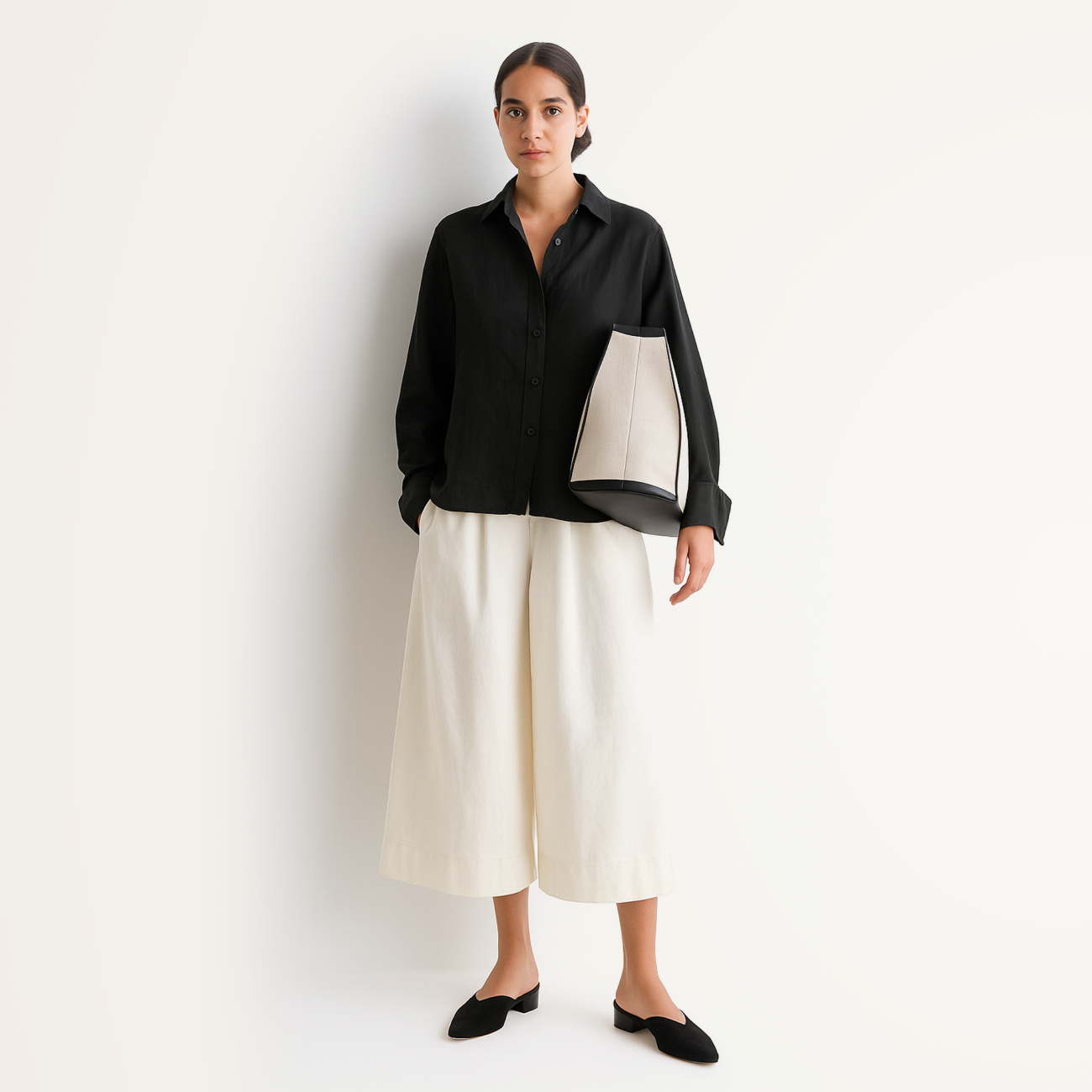Minimalism
Minimalism is not just a visual aesthetic, but an entire philosophy focused on eliminating the superfluous and highlighting what truly matters. Embodying the idea that “less is more,” minimalism aims to create harmony, functionality, and balance in everything — from clothing and surroundings to lifestyle itself. This concept becomes especially appealing in the modern world, where an excess of information and possessions drives people to seek mindfulness and simplicity.
History
The origins of minimalism in fashion can be traced back to the 1920s, when Coco Chanel introduced her little black dress. Inspired by Suprematism and, in particular, Kazimir Malevich’s painting Black Square, the dress became a symbol of universality and simplicity—appropriate for any occasion. In 1954, Chanel created her iconic suit which, like her dress, was marked by longevity and timeless style.
Minimalism gained wider traction in the 1960s, influenced by New York artists who brought geometric forms, neutral colors, and monochromatic palettes into contemporary art. These ideas soon permeated fashion, shortening hemlines and simplifying silhouettes. In the 1990s, minimalism reached its peak popularity, spurred by economic crises, environmental concerns, and a growing interest in Eastern philosophies that emphasized moderation and simplicity.
During the 1990s, minimalism found strong advocates among European and American designers. In Europe, Jil Sander and Helmut Lang stood out. Sander focused on neutral tones, clean lines, and high-quality fabrics, while Lang experimented with innovative materials—including blends of natural and synthetic fibers, metallic threads, and reflective textiles. Lang’s work established a vision of technological minimalism that defined the decade.
In the U.S., designer Roy Halston was one of the founding figures of American minimalism. He worked with full pieces of fabric, crafting silhouettes through natural draping and emphasizing the structure of the material itself. His designs, known for their fluid lines and ease, laid the groundwork for American minimalism.
Donna Karan also played a key role by creating functional and comfortable clothing for professional women. In the 1980s, she introduced the jersey bodysuit as an alternative to the traditional blouse, a pivotal element of the minimalist wardrobe. Her focus on simplicity and versatility stood in contrast to the exaggerated, detail-heavy fashion of the decade.
In the 2000s, minimalism gave way to luxury and kitsch, but in the 2010s—amid economic and ecological concerns—it made a strong comeback. A defining moment was Raf Simons’s appointment as creative director of Dior, replacing John Galliano, which reignited interest in a more restrained, elegant aesthetic.
Today, minimalism remains relevant, aligning with the growing trends of ethical and sustainable fashion. High quality, versatility, and a rejection of excess have made this style essential for those embracing conscious consumption.
Signature elements of the style
Color palette
Minimalism relies on neutral tones—white, black, gray, beige, and muted shades of blue or green. Colors are used to create a restrained and harmonious look, emphasizing shape and texture rather than color saturation.
Prints
Prints are nearly absent in minimalism, but if present, they are subtle geometric patterns or stripes that highlight the strict and graphic nature of the style.
Textures
Minimalism embraces natural and high-quality materials—cotton, linen, wool, cashmere, and silk. Fabrics should provide tactile pleasure and add depth to the look through matte or smooth finishes.
Cuts & silhouette
Simplicity and a clean, geometric cut are key features of minimalism. Clean lines, a loose yet structured silhouette, and the absence of excess or decoration define the style. The focus is on thoughtful proportions and a perfect fit, lending the look a sense of refinement and ease.
Wardrobe essentials
- White Shirt: Classic, understated, and loose-fitting—suitable for both everyday wear and professional looks.
- Blazer or Jacket: Tailored and structured, with minimalist detailing. Enhances the silhouette and adds formality.
- Loose Trousers: Typically straight-leg or slightly flared, they create a clean silhouette and offer comfort.
- Knit Dress: Sleek, monochrome, made from high-quality fabric with no excess detailing.
- Basic T-shirts and Tops: Simple and crafted from natural fabrics, they serve as a versatile base for many outfits.
- Classic Coat: Usually straight-cut, with minimal decor, made from wool or cashmere.
- Minimalist Accessories: Thin-strapped watches, simple stud earrings, or small rings.
Substyles
- Scandinavian Minimalism: Rooted in the principles of coziness, simplicity, and functionality, inspired by Nordic climate and culture. It features light neutral tones (white, grey, beige), natural materials, simple comfortable shapes, and layering. This style promotes conscious consumption and offers a practical wardrobe suited for everyday life.
- Zen Minimalism: Inspired by the Japanese philosophy of Zen Buddhism, this style embraces naturalness and harmony. The color palette is muted and earthy (sand, grey, olive), the materials are raw and natural, and the silhouettes are simple and loose, often reminiscent of kimonos. It conveys a sense of calm and acceptance, focusing on inner peace and simplicity.
Email: support@belt-app.com


















